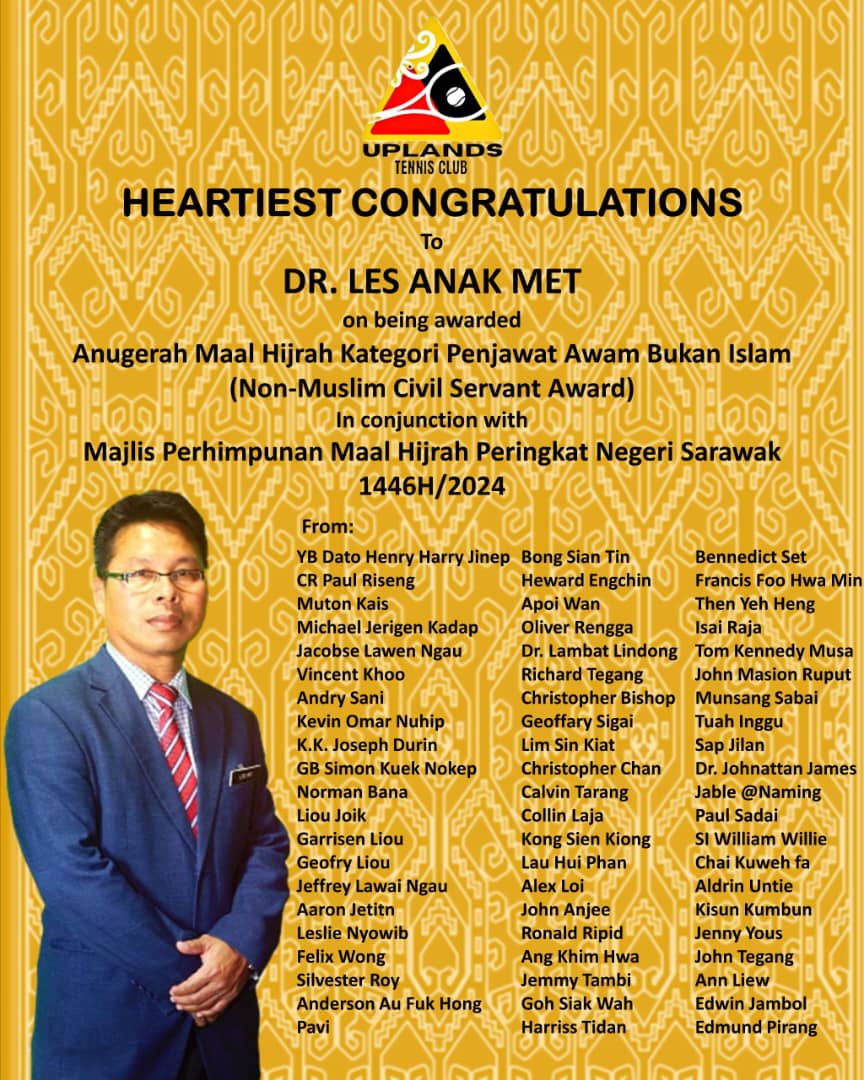ADVERTISE HERE
 Traditional mashed rice, or Nuba Laya, prepared by my very own mother. Photo by Marie Jane Luwen Mathew Vanyui
Traditional mashed rice, or Nuba Laya, prepared by my very own mother. Photo by Marie Jane Luwen Mathew VanyuiNuba Laya
Traditional mashed rice might sound deceptively simple and mundane to some, but to me, its pure simplicity is nothing short of extraordinary.
Introducing the Nuba Laya, a traditional Lun Bawang and Kelabit dish. It is one of the fundamental staples, forming the base of many meals and this humble food holds a special place in my heart.
Coming from a mixed Dayak-Lun Bawang family, Nuba Laya has been my favourite dish, lovingly prepared by my mother and grandmother.
The purest form of the Nuba Laya is displayed as hot steamed mashed rice, normally wrapped in leaves.
The leaves, known as Daun Long in Iban, are referred to as “daun isip” or “itip” in Kelabit.
The Kelabit people are the indigenous Dayaks of the Bario highlands while Lun Bawang people are from the central part of Northern Borneo.
The leaves infuse the rice with a subtle fragrance that is both comforting and exotic.
This dish reflects their traditional culinary practices, showcasing their deep connection to the land and its produce which is vividly linked to the jubilant celebration in Borneo, the harvest festival.
The method of steaming and mashing the rice, followed by wrapping it in leaves, is a time-honored technique passed down through generations.
This process not only enhances the flavor but also preserves the nutritional value of the rice.
Nuba Laya’s appeal lies in its simplicity and the purity of its ingredients, as it does not include any added spices.
The unique combination of hot steamed mashed rice and aromatic leaves creates a distinct flavor profile.
Nuba Laya is typically served warm, with the leaf wrapping delicately unwrapped to reveal the fragrant, mashed rice within.
It can be enjoyed by pairing with any dish, such as grilled meats, vegetables, eggs or sauces.
The texture of the mashed rice—slightly sticky consistency and cohesive—makes it easy to handle and consume, even without utensils, which is practical and aligns with traditional eating practices.
Nuba Laya holds profound cultural significance within the Dayak-Lun Bawang community, serving as a symbol of tradition, heritage, and communal gatherings.
The preparation and sharing of Nuba Laya are often associated with special occasions, celebrations, and communal gatherings.
It is a dish that brings people together, fostering a sense of unity and camaraderie within the community.
Nuba Laya is traditionally prepared and served during festivals, weddings, and other important ceremonies, where it symbolizes abundance and hospitality.
Its presence on the dining table signifies the sharing of blessings and the strengthening of social bonds.
Growing up in a mixed Dayak-Lun Bawang family, Nuba Laya has always been a cherished part of my culinary heritage.
I have fond memories of helping my grandmother and mother prepare this dish during family gatherings from the earliest moments of my childhood.
The aroma of the steamed rice mingling with the earthy scent of the wrapping leaves evokes a sense of nostalgia and comfort, reminding me of joyful moments spent with loved ones. — DayakDaily
Marie Jane Luwen Mathew Vanyui from Sibu is the Consolation Winner (Youth Category) in the ‘Gastronomy and I: My Favourite Dish’ writing competition organised by DayakDaily and supported by the Sarawak Ministry of Tourism, Creative Industry and Performing Arts, and Imperial Hotel Kuching.










 English (US) ·
English (US) ·